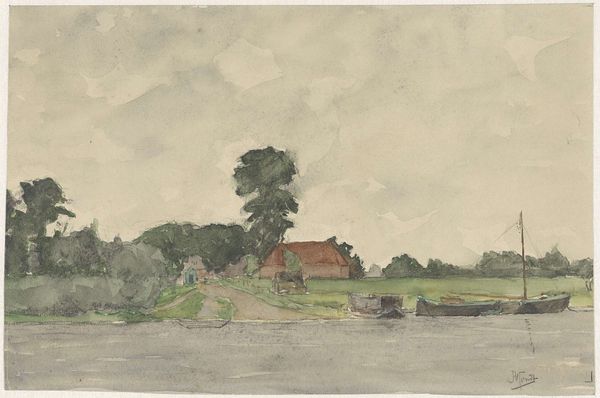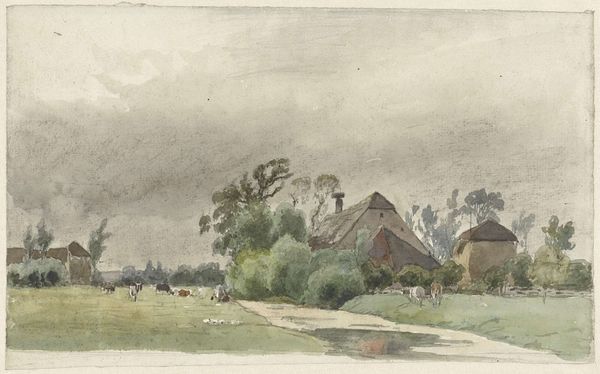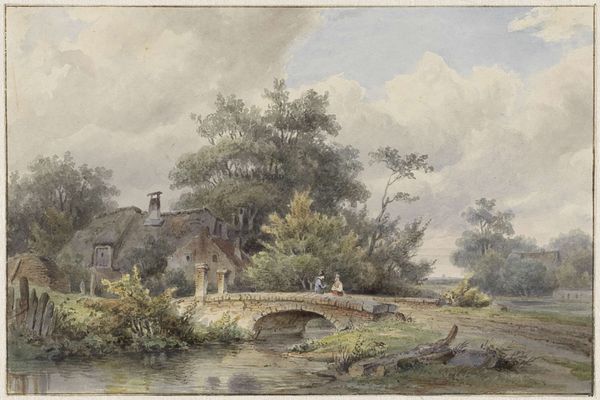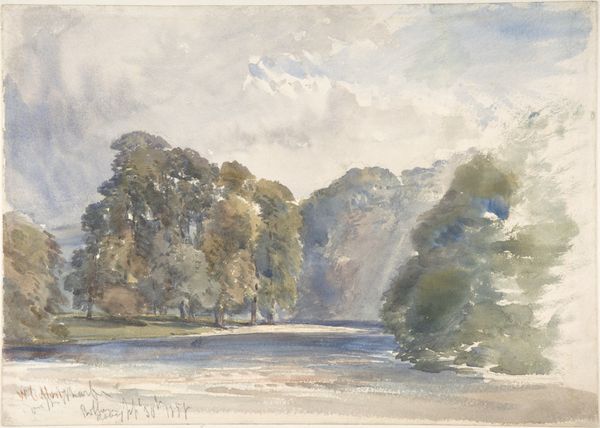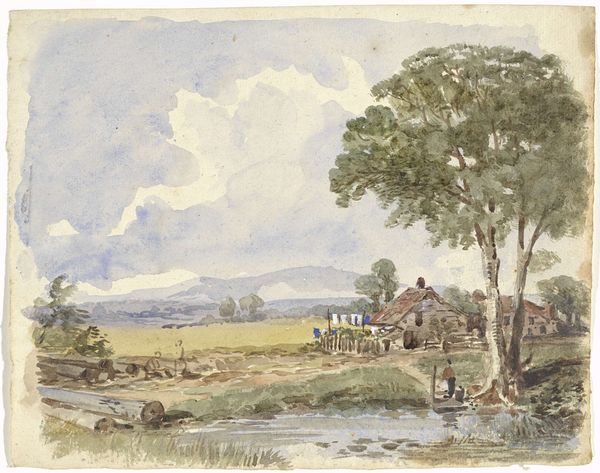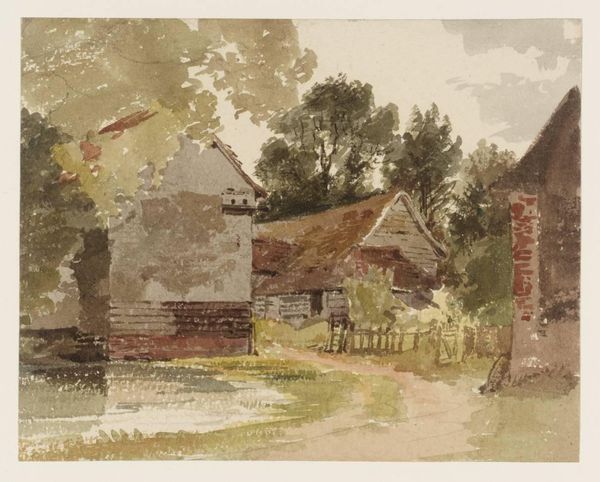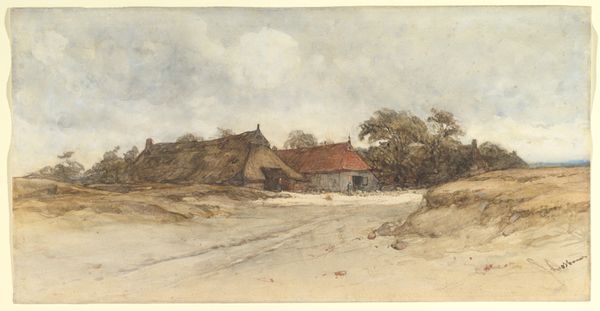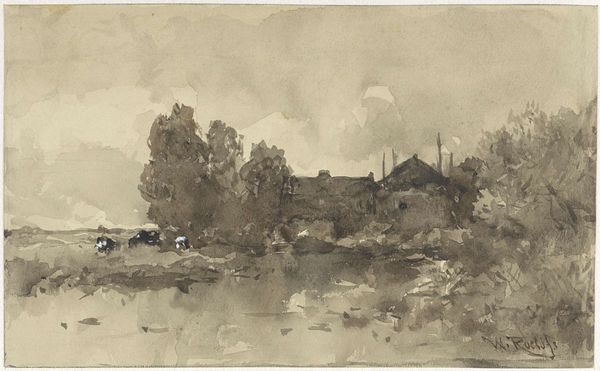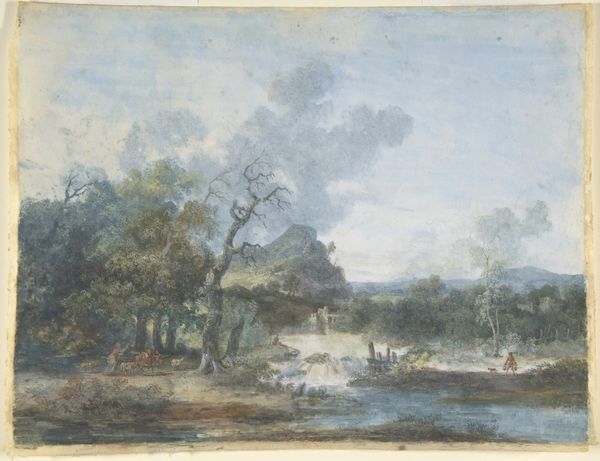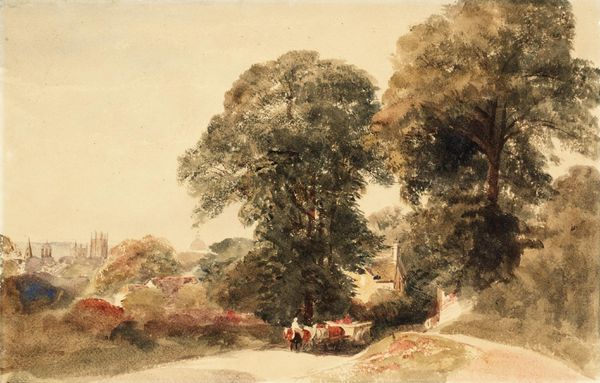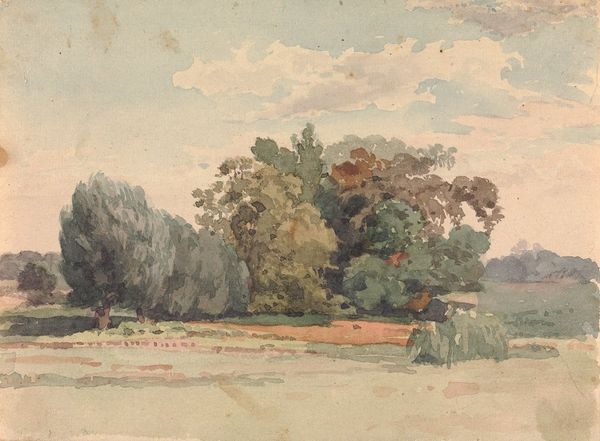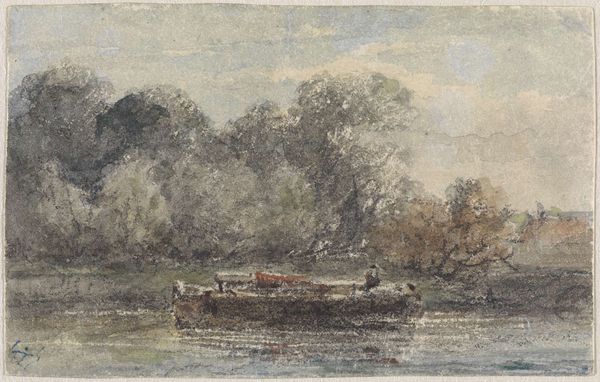
Boerderij onder hoge bomen met water op de voorgrond 1845 - 1925
0:00
0:00
juliusjacobusvandesandebakhuyzen
Rijksmuseum
Dimensions: height 211 mm, width 310 mm
Copyright: Rijks Museum: Open Domain
Curator: This watercolor and ink drawing is titled "Boerderij onder hoge bomen met water op de voorgrond," or "Farmhouse under Tall Trees with Water in the Foreground." It comes to us from Julius Jacobus van de Sande Bakhuyzen and was likely created between 1845 and 1925. Editor: The initial impression is one of tranquility, maybe a touch melancholy. The muted tones and broad washes create a softened reality, focusing on subtle variations in texture rather than bold statements. The composition seems straightforward at first, but there is an emphasis on horizontal versus vertical elements that anchors the scene. Curator: Absolutely. The almost monochromatic palette contributes to the image's muted affect. These colors reflect both stylistic choices linked to Romanticism and Realism, yet are connected with particular cultural memory – especially for a Dutch landscape—an echo of quiet rural existence. The almost photographic framing provides a sharp realism for the scene while enhancing the composition. Editor: And the treatment of light and shadow adds another layer. The source is diffuse, and not readily apparent. The highlights on the water draw our eyes forward, but do not reveal detail in the trees or buildings. Curator: Yes. Those reflections on the water seem to evoke the cyclical nature of life and time; the way nature absorbs and reflects human endeavor, mirroring cultural perception of progress or nostalgia over lost agricultural roots. These are important symbols, rooted deep in shared historical experience in the Netherlands. It seems he emphasizes the universality and continuity across generations, regardless of socioeconomic class, via very particular elements, shapes and organic design of nature, creating strong archetypical motifs in this seemingly quiet scenery. Editor: I find it interesting to focus more closely on Bakhuyzen’s deliberate choice to use watercolor on paper—techniques we usually would consider less 'serious' during this time. I do, however, appreciate that watercolor adds a lightness, an impermanence, contrasting with the weighty symbolism you point out, highlighting this tension by means of medium as a structural element of the art. Curator: Your view deepens our engagement by contrasting apparent light touch of medium with the lasting and serious themes embedded into our culture memory. Editor: By carefully considering composition, Bakhuyzen seems to explore fundamental concepts around our experience with nature; in so doing, Bakhuyzen's choice reveals something beyond the surface.
Comments
No comments
Be the first to comment and join the conversation on the ultimate creative platform.
